 W
WPet food is animal feed intended for consumption by pets. Typically sold in pet stores and supermarkets, it is usually specific to the type of animal, such as dog food or cat food. Most meat used for animals is a byproduct of the human food industry, and is not regarded as "human grade".
 W
WAn animal product is any material derived from the body of an animal. Examples are fat, flesh, blood, milk, eggs, and lesser known products, such as isinglass and rennet.
 W
WAquarium fish feeders are electric or electronic devices that are designed to feed aquarium fish at regular intervals. They are often used to feed fish when the aquarist is on vacation or is too busy to maintain a regular feeding schedule.
 W
WBird food or bird seed is food consumed by wild and domestic birds. While most bird food is fed to commercial fowl, people also use bird food to feed their pet birds or provide a feeding site for wild birds.
 W
WBlaptica dubia, the Dubia roach, orange-spotted roach, Guyana spotted roach, or Argentinian wood roach, is a medium-sized species of cockroach which grows to around 40–45 mm (1.6–1.8 in).
 W
WThe Chilean moth is a moth of the family Cossidae. The butterworm is the larval form and is commonly used as fishing bait in South America.
 W
WCat food is food for consumption by cats. Cats have specific requirements for their dietary nutrients. Certain nutrients, including many vitamins and amino acids, are degraded by the temperatures, pressures and chemical treatments used during manufacture, and hence must be added after manufacture to avoid nutritional deficiency.
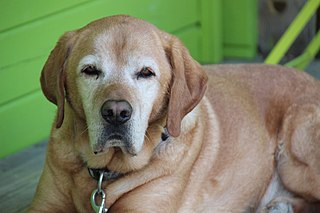 W
WSenior dog food diets are pet foods that are catered toward the senior or mature pet population. The senior dog population consists of dogs that are over the age of seven for most dog breeds, though in general large and giant breed dogs tend to reach this life stage earlier when compared to smaller breed dogs. Senior dog foods contain nutrients and characteristics that are used to improve the health of the aging dog. Aging in dogs causes many changes to occur physiologically that will require a change in nutrient composition of their diet. A major change that occurs is the decrease in energy requirements which is addressed by lowered caloric content of senior pet foods. Although energy requirements decrease, protein requirements increase as the dog ages. Senior dog foods include a higher protein content as well as highly digestible protein sources to deal with this. Nutrients included for joint and bone health include glucosamine, chondroitin, omega-3 fatty acids as well as two main minerals; calcium and phosphorus. Sources of fiber included in senior dog foods include beet pulp and flax seed as well as fructooligosaccharides (FOS) and mannanoligosaccharides (MOS). These act to increase gastrointestinal health. Brain and cognitive health decline as the dog ages which leads to the inclusion of vitamin E and L-carnitine in senior dog diets to combat this decline. Skin and coat health can also decline in older dogs due to various reasons. The inclusion of linoleic acid as well as vitamin A into senior dog diets helps to improve or maintain the skin and coat of senior dogs. Immune system health is important to maintain in older dogs to prevent the development of various diseases. By including omega-3 and omega-6 fatty acids, vitamin E, β-carotene as well as pre- and pro-biotics, the immune system can be boosted and maintained to help improve overall health.
 W
WA dog bakery is a business that produces fresh baked goods for dogs. The first dog bakery, Famous Fido, opened in 1979 on Chicago, Illinois's north side. Many dog bakeries carry specialty pastries and treats especially for dogs with allergies, dietary needs, or bad breath. Now people can even order dog treats online and they can be delivered straight to their home.
 W
WA dog biscuit is a hard biscuit-based dietary supplement for dogs or other canines, similar to human snack food.
 W
WDog food is food specifically formulated and intended for consumption by dogs and other related canines. Dogs are considered to be omnivores with a carnivorous bias. They have the sharp, pointed teeth and shorter gastrointestinal tracts of carnivores, better suited for the consumption of meat than of vegetable substances, yet also have 10 genes that are responsible for starch and glucose digestion, as well as the ability to produce amylase, an enzyme that functions to break down carbohydrates into simple sugars - something that carnivores lack. Dogs evolved the ability living alongside humans in agricultural societies, as they managed on scrap leftovers from humans.
 W
WAquarium fish feed is plant or animal material intended for consumption by pet fish kept in aquariums or ponds. Fish foods normally contain macronutrients, trace elements and vitamins necessary to keep captive fish in good health. Approximately 80% of fishkeeping hobbyists feed their fish exclusively prepared foods that most commonly are produced in flake, pellet or tablet form. Pelleted forms, some of which sink rapidly, are often used for larger fish or bottom feeding species such as loaches or catfish. Some fish foods also contain additives such as sex hormones or beta carotene to artificially enhance the color of ornamental fish.
 W
WFish meal is a commercial product mostly made from fish that are not used for human consumption; fishmeal is generally used to feed farm animals in an agricultural setting, e.g., pigs, poultry, and farmed fish. Because it is calorically dense and cheap to produce, fishmeal has played a critical role in the growth of factory farms and the number of farm animals it is possible to breed and feed.
 W
WGrape seed oil is a vegetable oil derived from the seeds of grapes. A by-product of the winemaking industry, it is typically used for edible applications.
 W
WAcheta domesticus, commonly called the house cricket, is a cricket most likely native to Southwestern Asia, but between 1950 and 2000 it became the standard feeder insect for the pet and research industries and spread worldwide. They can be kept as pets themselves, as this has been the case in China and Japan.
 W
WHypoallergenic dog food diets are created for canines that experience food-related allergies causing adverse effects to their physical health. The molecules that usually become allergens are intact proteins or glycoproteins. Hypoallergenic dog food diets offer a variety of protein sources that are unique by using proteins that are not recognized by the dog's antibodies as being antigens, minimizing allergic reactions. Adding novel protein sources, such as novel meats that a dog or its ancestors have never been exposed to is one method. Novel proteins can also be created by chemically modifying well known protein sources using hydrolysis techniques, rendering proteins unrecognizable by the gastrointestinal tract. Not all antigens are specific to proteins, however, and it is possible for anything that the body ingests to become an allergen. Providing diets with a limited amount of ingredients can be used for diagnostic purposes, as well as for dogs who are allergic to the common ingredients that are used in pet food. Certain nutrients are commonly incorporated into hypoallergenic dog food to help alleviate the symptoms of an allergic reaction. These ingredients include omega-3 fatty acids, Vitamins A and E, zinc, novel carbohydrates, and fiber.
 W
WLive food is living food for carnivorous or omnivorous animals kept in captivity; in other words, small animals such as insects or mice fed to larger carnivorous or omnivorous species kept either in a zoo or as a pet.
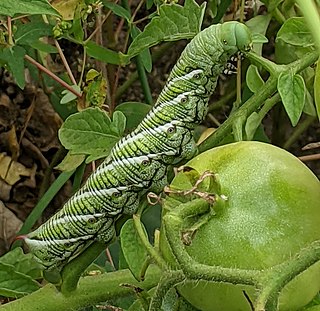 W
WManduca sexta is a moth of the family Sphingidae present through much of the American continent. The species was first described by Carl Linnaeus in his 1763 Centuria Insectorum.
 W
WMealworms are the larval form of the mealworm beetle, Tenebrio molitor, a species of darkling beetle. Like all holometabolic insects, they go through four life stages: egg, larva, pupa, and adult. Larvae typically measure about 2.5 cm or more, whereas adults are generally between 1.25 and 1.8 cm in length.
 W
WThe free-living nematode Panagrellus redivivus, is known to many aquarium enthusiasts and fish keepers as the microworm. It is a tiny roundworm used as the first food for larger kinds of newly-hatched fish, such as larval common carp. The microworm is widely used in aquaculture as food for a variety of fish and crustacean species.
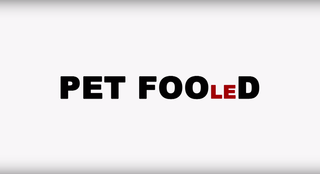 W
WPet Fooled is a 2016 American independent documentary film exploring the pet food industry with interviews from veterinarians and pet owners whose pets died, they allege, due to commercial packaged pet food. After premiering at the Catalina Film Festival on 2 October 2016, the film had an "on demand theatrical run" via Gathr, after which it became available on VOD platforms on 10 January 2017. The film is currently available to Netflix subscribers, as a digital download on iTunes or as a physical DVD via Amazon. The film, produced by Myla Films and directed/narrated by Kohl Harrington, was distributed by Gravitas Ventures.
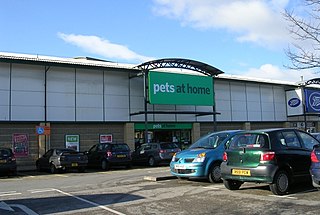 W
WA pet shop or pet store is a retail business which sells different kinds of animals to the public. A variety of animal supplies and pet accessories are also sold in pet shops. The products sold include: food, treats, toys, collars, leashes, cat litter, cages and aquariums. Some pet stores provide engraving services for pet tags, which have the owner's contact information in case the pet gets lost.
 W
WRice hulls are the hard protecting coverings of grains of rice. In addition to protecting rice during the growing season, rice hulls can be put to use as building material, fertilizer, insulation material, or fuel. Rice hulls are part of the chaff of the rice.
 W
WTenebrio is a genus of darkling beetles. Adults are 12–18 mm (0.47–0.71 in) long and can live for 1–2 years. The larvae are minor pests, but they are also widely reared and sold as pet food.
 W
WTenebrio obscurus, or the dark mealworm beetle, is a species of darkling beetle. The larvae, when used as feeder insects for reptile and amphibian pets, are known as mini mealworm. These insects should not be confused with younger mealworms or with the confused flour beetle, which is also occasionally used as a reptile feeder insect.
 W
WGryllodes sigillatus, the tropical house cricket, Indian house cricket or banded cricket, is a small cricket probably native to southwestern Asia, but has spread throughout tropical regions worldwide. Like its relative the house cricket, the tropical house cricket is also raised commercially for feeding certain pets such as reptiles, birds, amphibians, and insectivorous arthropods.
 W
WThe Turkestan cockroach, also known as the rusty red cockroach, red runner cockroach or simply rusty red, red runner, or lat, is a primarily outdoor-dwelling cockroach native to an area from northern Africa to Central Asia. Adults measure around 3 cm (1.2 in) in length. Adult males are a brownish orange or red, are slender, and have long, yellowish wings which allow it to attract females and to glide. Adult females are dark brown to black, with cream-colored markings on the shield and a cream-colored stripe edging its wings; they are broader than males, and have short vestigial wings. Nymphs are brown in front, black on the rear, and are wingless.
 W
WWaxworms are the caterpillar larvae of wax moths, which belong to the family Pyralidae. Two closely related species are commercially bred – the lesser wax moth and the greater wax moth. They belong to the tribe Galleriini in the snout moth subfamily Galleriinae. Another species whose larvae share that name is the Indian mealmoth, though this species is not available commercially.
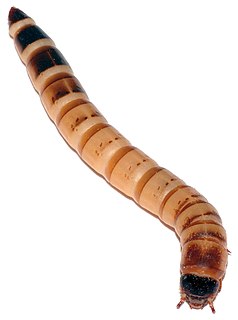 W
WZophobas morio is a species of darkling beetle, whose larvae are known by the common name Superworms, King Worms, Morio Worms or simply Zophobas. Superworms are common in the reptile pet industry as food, not to be confused with giant mealworms, which are Tenebrio molitor larvae sprayed with juvenile hormone.